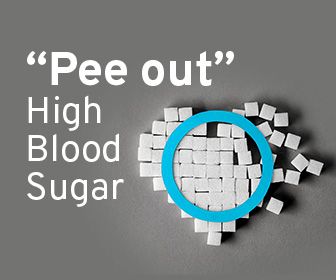Blood sugar spikes and crashes don’t just affect people with diabetes. They impact energy, mood, cravings, and long-term health. One minute, you’re feeling great. The next, you’re exhausted, foggy, and reaching for something sweet. Over time, unstable blood sugar leads to insulin resistance, weight gain, inflammation, and metabolic issues.
The body is designed to regulate blood sugar naturally—if you stop working against it. No magic pills, no extreme diets, just real habits that support stable glucose levels all day long. Here’s how to keep things balanced naturally.
1. Eat Protein and Healthy Fats with Every Meal
Carbs alone spike blood sugar. Pairing them with protein and healthy fats slows digestion, prevents sudden glucose surges, and keeps energy stable. That’s why eating toast with eggs and avocado is better than just toast, and why a handful of almonds keeps you full longer than a banana alone.
Protein stimulates glucagon, a hormone that counterbalances insulin. Healthy fats slow carb absorption, preventing sugar crashes. Instead of eating sugar-loaded oatmeal, try scrambled eggs with vegetables and olive oil. Instead of just rice, add salmon and avocado.
2. Prioritize Fiber for Slow, Steady Glucose Release
Refined carbs spike blood sugar, but fiber slows down digestion, preventing rapid glucose release. High-fiber foods also feed good gut bacteria, improving insulin sensitivity. Instead of processed grains, choose whole, fiber-rich options.
Best sources:
Vegetables: Spinach, kale, broccoli
Seeds: Chia, flaxseeds, pumpkin seeds
Legumes: Lentils, chickpeas, black beans
Whole grains: Quinoa, oats, farro
Swapping white bread for sprouted grain bread or instant oats for steel-cut oats can significantly reduce post-meal sugar spikes.
3. Move After Eating to Lower Blood Sugar Naturally
A short walk after meals reduces blood glucose levels by helping muscles absorb sugar from the bloodstream. Even 10–15 minutes of light movement after eating can cut glucose spikes by up to 30%.
Best post-meal movements:
Walking for 10–20 minutes
Bodyweight exercises (squats, lunges, push-ups)
Stretching or yoga
Even small actions make a difference. Standing instead of sitting, pacing while on the phone, or doing household chores after a meal all help regulate glucose levels.
4. Reduce Processed Sugar and Refined Carbs
Sugar causes rapid blood glucose spikes, followed by crashes that trigger hunger, cravings, and fatigue. Processed carbs—white bread, pasta, pastries—act like sugar in the body, causing insulin surges that lead to long-term resistance.
Instead of eliminating all carbs, focus on quality. Swap sugary cereals for oats with nuts and berries. Choose brown rice over white rice, sweet potatoes over fries, and dark chocolate over milk chocolate.
If a sugar craving hits, combine it with protein or fat. A square of dark chocolate with almonds or a small apple with peanut butter reduces glucose spikes compared to eating sugar alone.
5. Drink Apple Cider Vinegar Before High-Carb Meals
Apple cider vinegar (ACV) slows carb absorption, improves insulin sensitivity, and lowers post-meal blood sugar spikes. Studies show that 1–2 tablespoons of ACV before meals can reduce glucose spikes by up to 30–40%.
How to use it:
Mix 1 tablespoon of ACV in water before meals
Use ACV as a salad dressing with olive oil
Add it to herbal teas or warm water with lemon
For best results, take it before meals that contain carbs, especially in the evening when insulin sensitivity is naturally lower.
6. Get Enough Sleep to Prevent Insulin Resistance
One night of bad sleep raises blood sugar and insulin levels—even in healthy people. Chronic sleep deprivation leads to higher cortisol levels, increased cravings, and reduced glucose control.
How to improve sleep for better blood sugar control:
Stick to a regular schedule (sleep and wake at the same time)
Limit blue light before bed (no screens 60 minutes before sleep)
Increase magnesium intake (found in nuts, leafy greens, dark chocolate)
Keep the room cool and dark (ideal temperature: 60–67°F or 15–19°C)
Fixing sleep is as important as fixing diet and exercise. It regulates hormones, reduces cravings, and keeps blood sugar steady.
7. Manage Stress to Prevent Blood Sugar Spikes
Stress triggers cortisol, a hormone that raises blood sugar and makes insulin less effective. This is why stress eating is real—the body craves quick energy when cortisol is high.
How to manage stress for better glucose control:
Strength training or yoga (lowers cortisol and stabilizes insulin)
Breathwork and meditation (reduces stress-induced glucose spikes)
Sunlight exposure (increases serotonin, reducing stress cravings)
Caffeine increases cortisol, so if you’re sensitive, swap coffee for matcha, herbal tea, or adaptogenic drinks like ashwagandha tea.
8. Use Cinnamon to Improve Insulin Sensitivity
Cinnamon reduces fasting blood sugar and improves insulin function. Just ½ to 1 teaspoon a day can lower glucose levels by up to 29%.
How to add cinnamon for blood sugar control:
Sprinkle on oats, yogurt, or coffee
Add to smoothies or herbal teas
Use in homemade energy bars or protein pancakes
Ceylon cinnamon (true cinnamon) is the best type, as it has higher levels of active compounds that regulate blood sugar.
9. Hydrate to Flush Out Excess Sugar
Dehydration raises blood sugar by concentrating glucose in the bloodstream. Water helps flush out excess sugar through urine, preventing buildup and stabilizing levels.
Best drinks for stable blood sugar:
Filtered water (drink half your body weight in ounces per day)
Mineral water (keeps electrolyte balance)
Herbal teas (ginger, cinnamon, peppermint support glucose control)
Adding a pinch of sea salt or drinking lemon water boosts hydration efficiency and prevents insulin spikes.
10. Eat More Fermented Foods for Better Glucose Control
Gut health affects how the body processes sugar. A weak gut microbiome leads to higher inflammation, insulin resistance, and glucose intolerance. Fermented foods introduce healthy bacteria that improve metabolism and insulin function.
Best choices for blood sugar stability:
Sauerkraut
Kimchi
Kefir
Yogurt (unsweetened)
Miso
Kombucha
Including fermented foods daily can reduce glucose levels and improve overall digestion.
Blood Sugar Stability is a Lifestyle
Glucose spikes don’t just cause energy crashes—they lead to weight gain, cravings, insulin resistance, and long-term metabolic damage. The good news? You can control it naturally.
Stable blood sugar comes from daily habits, not quick fixes. Eating balanced meals, moving after eating, reducing processed sugar, managing stress, and improving sleep all work together. There’s no magic solution, but stacking small, consistent habits keeps glucose stable—without medication or extreme diets.
Blood sugar balance isn’t just about avoiding diabetes—it’s about having stable energy, fewer cravings, and a body that works the way it should. Give it the right habits, and it will take care of the rest.




